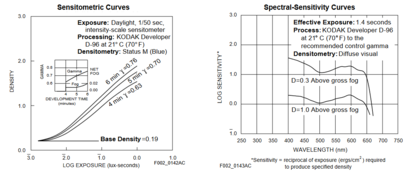Ah, I finally found a Japanese page I could put through a translator with the history of Fuji films. This is very interesting.
富士フイルム創立以前から近年までの情報を、年表・ヒストリーでご覧いただけます。

www-fujifilm-co-jp.translate.goog
Below is a translated excerpt:
In April 1952, when the demand for amateur photography was increasing, our company launched a new product, ``Neopan SS,'' in its main product, roll film.
"Neopan SS” is an orthopanchromatic film with a sensitivity of ASA100 (ASA is the photographic sensitivity display standard set by the American National Standards Association), 2.5 times the sensitivity of the conventional “Neopan”, and is close to the color sensitivity of the naked eye. It had a wide range of latitude (exposure latitude), rich gradation, and excellent fine grain characteristics. In particular, the significantly increased sensitivity compared to conventional film made it useful for artificial shooting in the early morning, at dusk, indoors, and in studios. It was also suitable for night photography, and was used not only by amateur photographers, but also by professional users who took photographs of news reports, portraits, and documentary photographs.
The following year, in March 1953, the company improved the conventional "SP" and commercialized "Neopan SS" for 35mm film.
Neopan S, SS, SSS, F (roll film)
Neopan S, SS, SSS, F (35mm size)
Since then, "Neopan SS" has been improved to a higher quality film, and continues to be a long-selling product to this day as Japan's representative black and white film.
Following the commercialization of "Neopan SS," our company began creating a series of roll films to meet the diverse needs of users. These include "Neopan S" (sensitivity ASA 50) with excellent graininess, the high-sensitivity film "Neopan SSS" (sensitivity ASA 200), and the ultra-fine grain film "Neopan F" (sensitivity ASA 32). It was released one after another from 1958 (Showa 29) to 1958 (Showa 33).
Regarding 35mm film, various types were developed from 1953 to 1958: "S", "SS", "SSS", and "F".
Each series of ``Neopan'' was well received in various quarters, and ``S'', ``SS'', and ``SSS'' came to be used as symbols to represent the sensitivity of the film.













![[Photo] Neopan S, SS, SSS, F (roll film) [Photo] Neopan S, SS, SSS, F (roll film)](/forum/proxy.php?image=https%3A%2F%2Fwww.fujifilm.co.jp%2Fcorporate%2Faboutus%2Fhistory%2Fayumi%2Fpack%2Fimages%2Fp059_02.jpg&hash=d2ab711f8d1f4c5ce0071ba574e616c8)
![[Photo] Neopan S, SS, SSS, F (35mm size) [Photo] Neopan S, SS, SSS, F (35mm size)](/forum/proxy.php?image=https%3A%2F%2Fwww.fujifilm.co.jp%2Fcorporate%2Faboutus%2Fhistory%2Fayumi%2Fpack%2Fimages%2Fp060_01.jpg&hash=d4b0e30dcc9dce4f0c21862aba443228)
